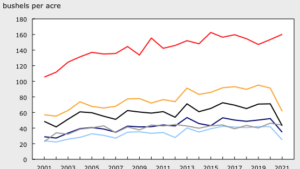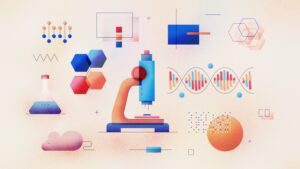
Made Just for You
Innovations in technology lead to “prescription food.” Discover what this could mean for agriculture and the seed industry.
In the world of agriculture, the word “innovation” is closely aligned with seed. Canada is known for its adoption of leading-edge technologies, including biotechnology, genomics and other plant breeding advances. The private sector invested about $110 million in plant breeding, research and varietal development in 2012, according to a report Canadian Seed Sector Profile, July 2014.
The report, which was completed by the National Seed Sector Value Chain Roundtable (including the Canadian Seed Trade Association, the Canadian Seed Growers’ Association, Canadian Seed Institute, Canadian Food Inspection Agency and Statistics Canada), emphasizes that seed is the first link in the value chain. It states that “much of the innovation for increased productivity and market opportunities for farmers is delivered by seed.”
Today, crop protectants can be applied to the seed to help reduce agriculture’s environmental impact. Companies such as Dow AgroSciences, DuPont Pioneer, Monsanto and Syngenta use robots in their research facilities. And today’s science, combined with computers, allows researchers to sequence plant genomes.
All of these advances have led to increased yields for farmers. For example, Canada’s canola yields have increased from an average of 23.9 bushels per acre in 1993 to 40 bushels per acre in 2013. But those innovations have already happened. What’s on the horizon? Just as scientists have been able to sequence the genomes of plants, they’ll be able to do so for humans. This, according to futurist Richard Worzel, will dramatically change how and what people eat.
“In the future, we will know how each individual’s genome will interact with different foods in unique, individualistic ways, so that the food that nurtures one person can drag down or do active harm to another,” Worzel explains. “We are learning that the old saying, ‘One man’s food is another man’s poison’ is literally true, but now we’re going to be in a position to know and specify which particular foods are good for each person, and which are bad.”
Worzel envisions mobile computer genies that track the food a person has eaten and it’s nutritional value. He even says these personal computer genies will communicate with chefs’ computer genies to potentially create custom “optimal” menus in high-end restaurants or in a captive customer setting where chefs see the same customers on a regular basis.
“This change will refashion the food growing, processing, packaging and retailing industries,” Worzel says. The source for all this data comes back to the farm, with respect to nutritional profile, growing methods and product quality.
Seeding Innovation
“Farmers will need to know quite a lot about the agricultural produce he grows and delivers to the market,” Worzel adds. “He will need to be able to make a close estimate of the nutritional value of everything he grows or makes, whether it’s grain, fruit, mushrooms, eggs or meat.” Worzel says this means he will need to know a lot about the specific nutrients used to raise these products — the soil where it was grown, the growing conditions it experienced, any stresses that might affect its nutritional value and the fundamental genetic qualities of the seed from which the produce started.
This sounds overwhelming, but Worzel predicts that most of it will be done by computers and sensors mounted to different kinds of equipment, such as tractors, drones and maybe even animals. Soil moisture, pH levels, soil fertility, temperature and pest pressures are just a few of the variables that will be measured.
“Farmers are also going to be able to use these developments to improve their yields and profits,” Worzel says. “Not only will they be able to optimize the treatment — and yield — of each acre, but they’ll be able to plant seeds that are most suitable for each acre.”
Equipment companies are already working on new planters that allow farmers to plant multiple hybrids within a field. In fact, Kinze Manufacturing, Inc., based in Williamsburg, Iowa, has been working on the world’s first electric multi-hybrid planter — putting the model into limited production for the spring 2015 seeding season.
“With the multi-hybrid planter, farmers will no longer have to make compromises and can optimize their seed hybrids — and ultimately increase their yields,” says Susanne Veatch, Kinze vice-president and chief marketing officer. “We look forward to bringing this innovation to farmers.”
This type of technology will not only make planting more efficient, but add dollars back to farmers’ pocketbooks. Jason Webster, Beck’s Hybrids central Illinois practical farm research director, explains that in a two-year research study by Beck’s, multi-hybrid planting resulted in a $54.24 net profit per acre and a 9.5 bushel per acre yield increase — excluding the cost to upgrade equipment.
Worzel predicts planters of the future will come equipped with sensors to assess moisture, pH and nutrient content on a square foot by square foot basis. “Add to this the ability to first read, then to optimize the genetics of a particular seed, say of wheat, in the computer, based on our expanding knowledge of plant genetics,” he explains. “Once an optimal seed has been designed in the computer, it can be produced in the laboratory, and put into production in the field.”
Just imagine the possibilities with continued innovation.
Julie Deering













